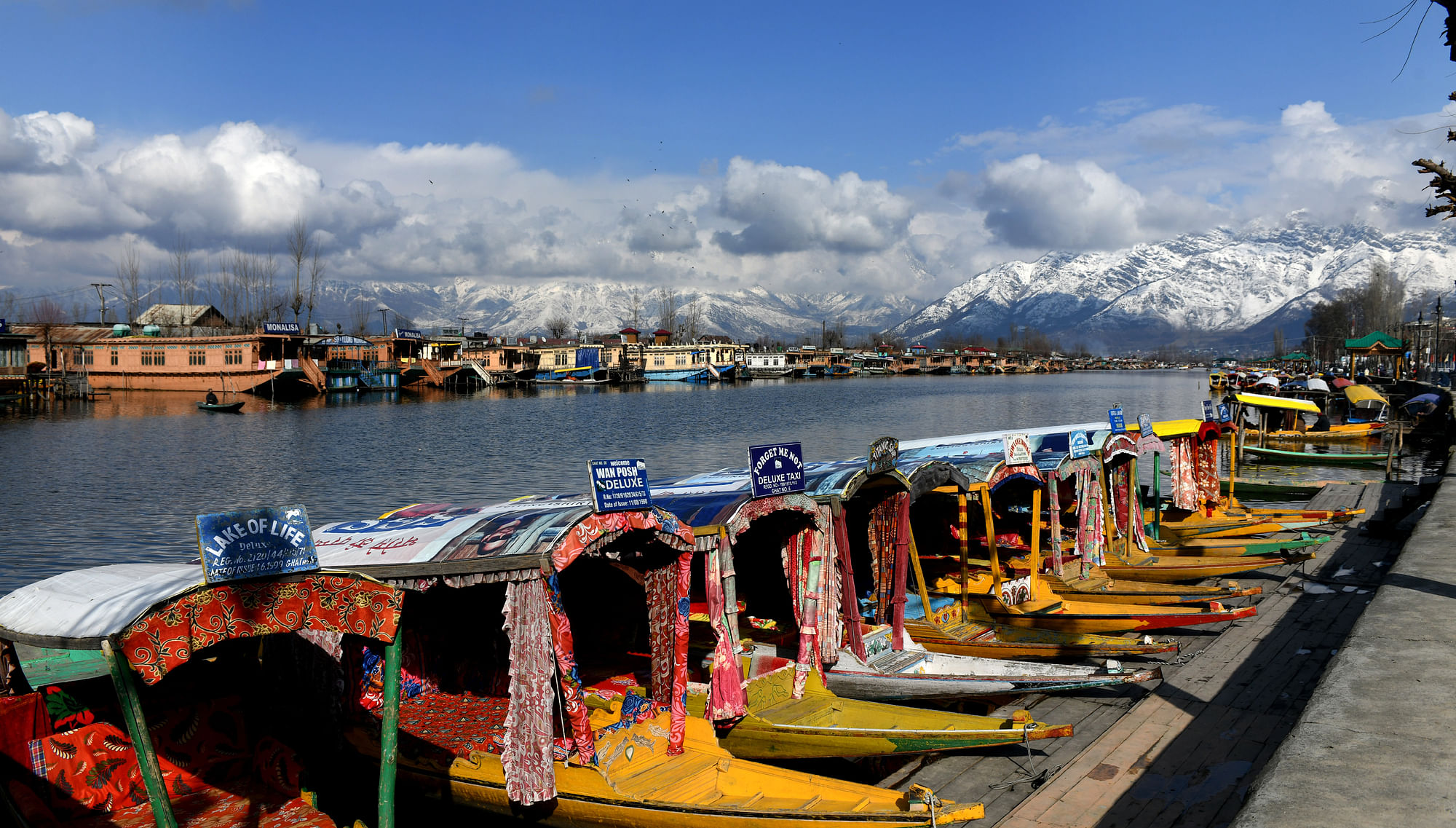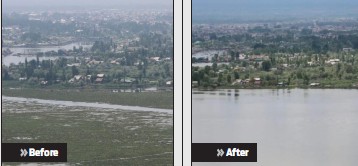For centuries, the beauty of Dal Lake has mesmerised kings, maharajas, British and visitors from around the world over. However, the lake has been bedeviled by anthropogenic pressures coupled with man-made onslaught and official apathy.
Hosting of G20 Summit on the banks of Dal Lake has brought the spotlight on its immense ecological and economic importance and need for long-term conservation.
Over 500 men and 16 machines including harvesters have been pressed into service to give facelift to Dal Lake in the run up to the G20 summit.
The Dal is fed by Marsar, a glacial oligotrophic alpine lake through two main sub-watersheds Dhara Danihama and Dachigam. The lake functions as the central part of a large interconnected aquatic ecosystem of the Valley.
Hundreds of springs in the lake also maintain its hydrology. Spanning over 337 sq kms, Dal Lake’s catchment comprises human habitations, denuded mountains, karewas, perennial plants ,open scrub, agricultural fields and barren land.
The Water quality of Dal was so clean that it earned praise from Walter R Lawrence who was the Resettlement Commissioner of Kashmir in 1887.
“Perhaps in the whole world there is no corner as pleasant as Dal Lake. The water of the Dal is clear and soft as silk, and the people say that the shawls of Kashmir owe much of their excellence to being washed in the soft waters of the lake,” Lawrence writes in his book ‘Valley of Kashmir’.
Dal was a favourite haunt of Bollywood in 1970s and 80s. Many songs were shot in the backdrop of the picturesque lake. However, extensive urbanisation in and around Dal Lake squeezed its area and led to heavy flow of sewage— taking a toll on its flora and fauna.
In absence of sewage treatment facilities and cleaning, Dal was plagued with extensive growth of weeds till a few years ago. As this was not enough, some politicians in the past for maintaining their vote bank constructed roads and bridges inside the lake affecting its fragile eco-system.
In 2002, the Jammu and Kashmir High Court took cognisance of a letter of a law student who had stated that Dal Lake has turned into a ‘reservoir of sewage, wastes and effluents.
”The HC converted the letter into a PIL and passed a slew of directions for improving the condition of the lake which has been embattled with serious ecological challenges. Miffed over failure of authorities to take measures for conservation of Dal, the High Court in 2009 took the lake in its own control and declared it Custodia Legis.
The J&K Government has spent Rs 759 crore in 16 years (2002-2018) on the preservation of Dal lake and building of infrastructure for its inhabitants. In the last five years, Rs 239 crore has been spent for conservation of the water body.
For the restoration of Dal and Nigeen, a DPR for Rs 273 crore has been prepared through the Prime Minister’s Development Package. The central government has been serious in restoration of Dal lake and generously funding its conservation. The only problem is proper execution of plans.
Sewage Treatment Plants have been constructed around the lake and machinery also procured for deweeding and dredging. It is ironic that several interior areas of the lake from Nowpora to Saida Kadal are yet to be connected with STPs. This needs to be looked into.
For the past two years, Lake Conservation and Management Authority (LCMA), entrusted with Dal conservation, has taken up slew of measures to restore the grandeur of the lake.
There has been bone of contention on the original area of Dal lake. Some believe that Dal lake has been reduced from 50 sq kms to 11 sq kms.
However, LCMA refutes the theory. They maintain that as per settlement of the lake carried out by Sir Walter Lawrence, the lake area was 25.86 sq km and the water area around 18 sq km in 1887.
Dr Bashir Bhat, vice-chairman LCMA said delineation and demarcation of the boundary of the lake has been carried out for the first time. 302 boundary pillars, markers have been installed along the boundary using time stamped Survey of India Maps, GIS data from Drones and Ground-Truthing.
“Dal Lake has the highest ever open space of 20.3 sq kms. We have been working for preservation of Dal-Nigeen spread over an area of 25.01 sq kms and in the catchment area of 337.17 sq.kms has been undertaken on a war footing basis. We have been able to control the infestation of lily pads and weeds. If left unattended, these could have turned into landmass,” Bhat said.
One of the major problems confronting Dal Lake is lack of proper water circulation. Due to closure of Nallahmar canal, water circulation in interior areas of the lake has been severely affected.
Nallahmar was dug up in the 13th century by famous Kashmir king Budshah to regulate waters of Dal lake and provide water transport facilities to its dwellers. However, the then government in the early 70s filled up the canal.
The Nallahmar waterway crisscrossed through Downtown and served as navigational route and major outflow channel of Dal lake for centuries together. Its waters originated from Dachigam rakh and after accumulating in Harwan reservoir moved through another canal up to Shalimar and Nishat. Though LCMA has restored many interior canals and navigational channels, but it needs to explore possibility of reopening Nallahmar canal. Another outflow channel Chuntkul also needs to be dredged and cleaned.
LCMA needs to maintain hydrology of Dal by regularly maintaining its inflow and outflow channels. Needle System must be restored at Dal-Lock regulatory gate to maintain regular flow.
Bathymetric Survey conducted for the first time enables scientific de weeding and dredging of the lake without damaging its ecosystem. Dredging and deweeding must be conducted under supervision of experts. As per estimates, 9-10 metric tons of solid waste is being collected on a daily basis from houseboats, hamlets, villages inside the lake and from open water surfaces including inflow and outflow channels.
Siltation is another problem confronting Dal. Tons of silt and nutrient load from catchment areas enters into the lake through Telbal and Maloori nallahs. It is estimated that 40,000-50,000 tons of dead and allochthonous material including silt and nutrients are added annually to the lake resulting in reduction of depth and propelling growth of weeds.
Measures to prevent the influx of silt into the lake need to be strengthened. During the last three years, measures have been taken to stop illegal constructions and improve water quality of Dal.
So far much work has been done but the good work has to be sustained. Organic vegetables grown in Dal lake are in high demand. Nadru (Lotus stem) grown in the lake is famous and is being exported to United Arab Emirates.
G20 Summit
The G20 tourism working group meeting at SKICC overlooking Dal lake on May 22 to 24 is a golden opportunity for J&K Government to seek global scientific assistance in conservation of the water body.
Top representatives of 20 countries including Argentina, Australia, Brazil, Canada,Germany, France, Indonesia, Italy, Japan, the Republic of Korea, Mexico, the Russian Federation, South Africa, UK, and the US are expected to participate in the meeting.
Besides, delegates from these countries will also attend the meeting. The foreign delegates are also scheduled to take a ride on Shikara in Dal Lake and attend cultural performances on its banks.
The J & K Government must utilise this opportunity to apprise them about the importance of conserving Dal Lake given its immense ecological, social, economic importance and tourism potential. If the working group includes conservation of Dal lake in its recommendations, it will surely help in getting global funding, top experts and state-of-the-art machinery to restore the glory of Dal lake.
Lieutenant Governor Manoj Sinha has also expressed optimism about the G20 summit in Srinagar, saying it will give a worldwide platform to promote the region’s long-standing hospitality legacy. He emphasised that the event will have a substantial influence on the tourism sector as well as the union territory’s overall economy.
“Srinagar city evolved and flourished around the water bodies, which contributed to the prosperity of society, local economy and the culture. However, due to neglect and degradation over the period of time, the restoration of this priceless heritage was the need of the hour and I am sure it will contribute to living standards of people and boost the local economy”, the LG Sinha has maintained.
Let’s hope that the beauty of Dal will catch the attention of G20 participants and they will act as ambassadors for Dal conservation. The lake with its unique eco-system with human habitations, houseboats, islands, and floating gardens is one of the major global tourist destinations. Dal must be considered as a global lake and deserves global efforts for its survival.
Author is Executive Editor, Greater Kashmir.
DISCLAIMER: The views and opinions expressed in this article are the personal opinions of the author.
The facts, analysis, assumptions and perspective appearing in the article do not reflect the views of GK.








